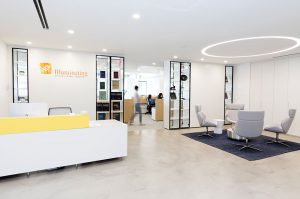The Tampa Section has an active calendar that includes various educational courses as well as multiple opportunities to network and socialize with industry peers. To keep abreast with our upcoming events follow the calendar below.
To Save on fees and learn more of the benefits of an IES membership click here!
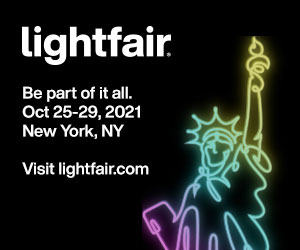
LightFair 2021 Moving to October 25-29 LightFair 2021 will be postponed until October 2021 report the International Association of Lighting Designers (IALD), the Illuminating Engineering Society (IES) and International Market Centers (IMC). The annual showcase of new innovations in lighting design moves to October 27-29, 2021 and the accompanying educational conference is now October 25-29, 2021 at the Jacob K. Javits Center in New York. The move puts LightFair 2021 at a more optimal time than the previously scheduled May 2021 dates.
RSVP: Pre-Registration is requested as Power Design has required security check in. Please plan to check in upon arrival at the main entrance.
You can prepay the $30.00 program fee online with below link. Lunch will be provided prior to the program at noon. Please plan to arrive early to grab a bite to eat and network with follow IES members.
SPEAKER: Ben Cantu, Lumenwerx
A student of Architecture, Ben has over 30 years of experience in consulting to Architects, Lighting Designers, Engineers, Interior Designers, and Landscape Architects when specifying architectural lighting systems. Ben is currently the NYC/Southeast Sales Manger for Lumenwerx.
DESCRIPTION:
This seminar will give an overview of what PoE means, the current state of the technology, and how it can be deployed in the context of LED lighting. We will explore in detail how PoE nodes can be used to power and control luminaires as well as what some of the tradeoffs are when converting a conventional LED lighting system to a PoE-based approach. We will also analyze the current limitations and benefits of this technology. Finally, some recommendations will be made for the successful deployment of a PoE project in the context of integrating lighting.
CREDITS- 1 LU
IoT, Connected Lighting, Smart Lighting, Smart Buildings are all terms that could be used to describe this topic and it certainly can it be confusing. This presentation will delve into and summarize the recent IES Lighting Practice LP-12-21 to make sure that it is easy to understand. During our journey we will clarify the necessary terms around IoT, understand the value of the problems that connected lighting can solve, and discover different use cases and their benefits. This presentation will also explain the technologies used in connected lighting and the applications they are used in. We will outline how to specify connected lighting throughout the project life cycle. The course will explain cybersecurity requirements as well as integration and customer acceptance. Finally, the course will highlight the future state of connected lighting.
Learning Objectives:
- Describe IoT Connected Lighting terms and requirements
- Discuss the value of the problem and how connected lighting can solve these problems for different use cases
- Evaluate different IoT technologies, cybersecurity needs and how to apply them in different spaces
- Understand how to specify IoT Connected Lighting through the project life cycle
HSW Objectives:
- Attendees will recognize how connected lighting and luminaire level lighting control can be used to improve occupant performance and well being
- Attendees will observe how connected lighting and luminaire level lighting control can provide improved safety in various space types
- Attendees will understand how a properly designed IoT connected lighting system can and should include aspects of cybersecurity to keep business and personal information safe and secure.
- Attendees will appreciate how a properly designed IoT connected lighting system can integrate with other building systems and how that can improve the wellness of the entire building and its occupants.
Webinar participants are eligible for one (1) IES Continuing Education Unit (CEU).
PRESENTER:
Michael Lunn, SE Regional Specification Sales Manager, Cooper Lighting Solutions
 Michael has been with Cooper for 25 years within the lighting control group. Holding roles of increasing responsibility from phone and field technical support, system startups, to sales and product management and Director of Product Marketing, he has now joined our Specification Sales team to bring his controls knowledge to the Specification lighting side.. Michael has a passion for lighting and controls and how the installer and end user interact with them. He is a knowledge expert on energy codes, wired and wireless networking as well as IoT applications. He provides energy code and system design guidance on many new Cooper products. He is a member of IES and is on the IES Progress Committee, Controls Protocol and IoT Committees.
Michael has been with Cooper for 25 years within the lighting control group. Holding roles of increasing responsibility from phone and field technical support, system startups, to sales and product management and Director of Product Marketing, he has now joined our Specification Sales team to bring his controls knowledge to the Specification lighting side.. Michael has a passion for lighting and controls and how the installer and end user interact with them. He is a knowledge expert on energy codes, wired and wireless networking as well as IoT applications. He provides energy code and system design guidance on many new Cooper products. He is a member of IES and is on the IES Progress Committee, Controls Protocol and IoT Committees.
Landscape lighting is like a foreign language. We need to learn how to navigate it and to properly employ the nuances that make the ‘magic’ we do with light. Learn about sculpting the night with light from Jan Moyer, a pioneer in providing clients with night environments they can relish.
Webinar participants are eligible for one (1) IES Continuing Education Unit (CEU).
PRESENTER: Janet Lennox Moyer, FIALD, AOLP COLD
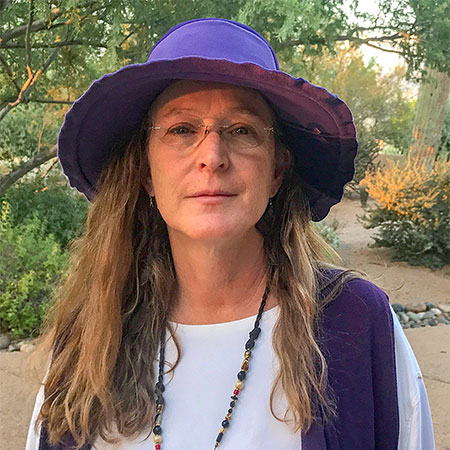 Jan began her lighting design career in 1976. She began specializing in landscape lighting in the mid 1980s and wrote the essential book used around the world, The Landscape Lighting Book, first released in 1992 and now in its third edition (Wiley, 2013). Over her career, she has worked on projects large and small, from the Defense Intelligence Agency’s first home in Washington, DC, to winery caves, entertainment gardens, and botanical gardens. Jan has taught lighting design since undergraduate school at UC Berkeley, Rutgers, and the Lighting Research Center, among others. She founded the International Landscape Lighting Institute (ILLI), a 501(c)(3) educational non-profit organization that provides landscape lighting education classes in the U.S. and abroad. Jan has amassed a wealth of knowledge that she shares in the 10 session on-line learning program available through IES, IES Learning: Learn Night Light: Observe, Design, Refine. In addition, she has begun work on a full-color design book scheduled for release in late 2021, The Art of Landscape Lighting: A Designer’s Companion, which will provide inspiration for designers through her learnings over more than 45 years of lighting design.
Jan began her lighting design career in 1976. She began specializing in landscape lighting in the mid 1980s and wrote the essential book used around the world, The Landscape Lighting Book, first released in 1992 and now in its third edition (Wiley, 2013). Over her career, she has worked on projects large and small, from the Defense Intelligence Agency’s first home in Washington, DC, to winery caves, entertainment gardens, and botanical gardens. Jan has taught lighting design since undergraduate school at UC Berkeley, Rutgers, and the Lighting Research Center, among others. She founded the International Landscape Lighting Institute (ILLI), a 501(c)(3) educational non-profit organization that provides landscape lighting education classes in the U.S. and abroad. Jan has amassed a wealth of knowledge that she shares in the 10 session on-line learning program available through IES, IES Learning: Learn Night Light: Observe, Design, Refine. In addition, she has begun work on a full-color design book scheduled for release in late 2021, The Art of Landscape Lighting: A Designer’s Companion, which will provide inspiration for designers through her learnings over more than 45 years of lighting design.
Come view the latest in lighting from exhibiting manufacturers and agencies.
Open to all architectural, interior design, engineering and landscape architecture industry professionals.
** If you would like ot become a sponsor of this event please contact us for additional sponsorship options **
ADMISSION AND LUNCH ARE FREE FOR ALL ATTENDEES
Feel free to contact us with any questions:
Ashley Beeler, IES Program Chair
[email protected]
(727) 793-1932
Historically, germicidal ultraviolet germicidal irradiation (UVGI) dates back more than a century and was widely used in hospitals and public places to reduce infections by inactivating airborne parthenogens in the 1930s – 1950s. Studies from those times demonstrated efficacy, but UVGI use later dropped out of favor in the 1960s after vaccines against a number of childhood diseases, such as polio and measles had been virtually eliminated. Of infectious diseases of significant severity in the developed world only tuberculosis has been without a vaccine and for that reason UVGI has remained in TB clinics – particularly in those countries where TB continues to be a major problem. In these countries, some expertise has been retained. Today with the COVID-19 pandemic, the lessons learned from TB control allow for a ‘rediscovery’ of this technology for use in the current pandemic. Furthermore, the pandemic has greatly accelerated development of UV-C LEDs and other lamp types such as the far-UV-C krypton-chloride (222-nm) lamp to augment the traditional use of low-pressure mercury (254 nm) lamp. Sadly, misconceptions about UVGI, such as a perceived skin cancer risk remain and a lack of understanding of proper safety precautions continue to slow the wide acceptance of UVGI. ANSI/IES RP44 was prepared by the IES Photobiology Committee to better inform all interested lighting specialists as well as those responsible for infectious disease control.
To download RP-44-21, or subscribe to the Lighting Library, visit the IES Webstore.
Please note this is a 90 min webinar, webinar participants are eligible for one (1.5) IES Continuing Education Units (CEUs).
PRESENTERS:
David Sliney
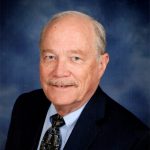 David Sliney holds a Ph.D. in biophysics and medical physics from University College London, Institute of Ophthalmology. He managed the Laser/Optical Radiation Program at what is now the Army Public Health Center until retirement. He is a faculty associate at the Johns Hopkins School of Public Health. His research interests focus on subjects related to ultraviolet effects, photobiological hazards of intense optical sources and lasers, and optical safety of medical devices. He is chair of the IES Photobiology Committee and was President of the American Society for Photobiology in 2008-2009 and a past Director of CIE Division 6 (Photobiology and Photochemistry) and a past Grum Awardee.
David Sliney holds a Ph.D. in biophysics and medical physics from University College London, Institute of Ophthalmology. He managed the Laser/Optical Radiation Program at what is now the Army Public Health Center until retirement. He is a faculty associate at the Johns Hopkins School of Public Health. His research interests focus on subjects related to ultraviolet effects, photobiological hazards of intense optical sources and lasers, and optical safety of medical devices. He is chair of the IES Photobiology Committee and was President of the American Society for Photobiology in 2008-2009 and a past Director of CIE Division 6 (Photobiology and Photochemistry) and a past Grum Awardee.
Dr. Rolf Bergman
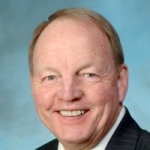 Dr. Rolf Bergman is currently an independent consultant (sole proprietor) in lighting technology and measurements. After graduating with a Ph.D. in Electrical Engineering in 1972 from the University of Minnesota, Dr. Bergman worked for over twenty-eight years at GE Lighting, all at Nela Park, Cleveland, OH, both as an individual contributor and manager in lamp technology. While at GE Lighting he was involved new product and process development, measurement capability and industry standards. Dr. Bergman was named Chief Scientist, Lamp Technology in 1992, a position he held until retirement in 2001. Currently, among other consulting work, he serves as an assessor of lighting laboratories for accreditation to NVLAP, and accrediting body organized at the National Institute of Standards and Technology (NIST). Dr. Bergman served as President of the CIE/USA National Committee from 11/2003 to 11/2008. He also was the chair of CIE TC 6-47, the group that produced a global standard for photobiological risk evaluation of lamps, now known as IEC 62471 (also CIE E9). He serves as a member of the IESNA Technical Procedures and Photobiology Committee and he is a member of CORM, an industry group that advises NIST on measurement needs in US industry. While at GE he was the author or co-author of 19 US Patents and published about 20 Journal articles with an additional 20 to 30 internal GE reports. In April 2020 he participated in the IES-sponsored webinar on the use of UV disinfection related to the then new Covid-19 pandemic; his focus there was on the source technology. That presentation was published: Photochemistry and Photobiology, 2021, 97: 466–470.
Dr. Rolf Bergman is currently an independent consultant (sole proprietor) in lighting technology and measurements. After graduating with a Ph.D. in Electrical Engineering in 1972 from the University of Minnesota, Dr. Bergman worked for over twenty-eight years at GE Lighting, all at Nela Park, Cleveland, OH, both as an individual contributor and manager in lamp technology. While at GE Lighting he was involved new product and process development, measurement capability and industry standards. Dr. Bergman was named Chief Scientist, Lamp Technology in 1992, a position he held until retirement in 2001. Currently, among other consulting work, he serves as an assessor of lighting laboratories for accreditation to NVLAP, and accrediting body organized at the National Institute of Standards and Technology (NIST). Dr. Bergman served as President of the CIE/USA National Committee from 11/2003 to 11/2008. He also was the chair of CIE TC 6-47, the group that produced a global standard for photobiological risk evaluation of lamps, now known as IEC 62471 (also CIE E9). He serves as a member of the IESNA Technical Procedures and Photobiology Committee and he is a member of CORM, an industry group that advises NIST on measurement needs in US industry. While at GE he was the author or co-author of 19 US Patents and published about 20 Journal articles with an additional 20 to 30 internal GE reports. In April 2020 he participated in the IES-sponsored webinar on the use of UV disinfection related to the then new Covid-19 pandemic; his focus there was on the source technology. That presentation was published: Photochemistry and Photobiology, 2021, 97: 466–470.
Richard Vincent
 Mr. Vincent applies germicidal ultraviolet (GUV) disinfection technology and tools to control the transmission of tuberculosis and other infectious diseases both airborne and surface borne (fomite) or mix-mode, in high-risk settings. During the COVID-19 pandemic he work with a team of virologists, engineers and biodesigners at Mount Sinai and RPI to inactivate SARS-CoV-2 inoculated on respirators to test a UVC system for possible reuse of respirators. He was the project manager and UV lighting specialist for the Tuberculosis Ultraviolet Shelter Study (TUSS), (1997-2004). TUSS—a multidisciplinary, multicenter epidemiological field trial of ultraviolet air cleansing effectiveness formed by St. Vincent’s Hospital and the Harvard School of Public Health (HSPH) advanced UVGI application for airborne disease control in homeless shelters. At the Mount Sinai Hospital, he is working to reduce the rate of hospital-acquired infections (HAIs) by benchmarking the efficacy of various technologies including mobile, whole-room UVC devices for decontamination of surfaces from pathogens such as MRSA, and C. Difficile. He has studied the use of stationary UV units to clean mobile technology, UVC cleansing of mobile technology. He is studying UV LED surface disinfection in the laboratory and then in situ. He has provided technical assistance on GUV projects in India, Myanmar, and Pakistan. Since 2016, Mr. Vincent serves at the Coordinator for the StopTB Partnership working Group: End TB Transmission Initiative (ETTI). He provided expert input on GUV for the WHO Guidelines on tuberculosis infection prevention and control, 2019 update. Mr. Vincent chairs the ASHRAE GCP 37 developing guidelines for the application of upper room ultraviolet germicidal irradiation systems (UVGI/GUV). Mr. Vincent chaired the CIE TC 6-52 resulting CIE 287:2021 a test method for gonioradiometric measurement of upper room GUV fixtures. He is working with the IES Photobiology committee, ASHRAE and the CIE to make recommendations for GUV in response to the COVID 19 pandemic.
Mr. Vincent applies germicidal ultraviolet (GUV) disinfection technology and tools to control the transmission of tuberculosis and other infectious diseases both airborne and surface borne (fomite) or mix-mode, in high-risk settings. During the COVID-19 pandemic he work with a team of virologists, engineers and biodesigners at Mount Sinai and RPI to inactivate SARS-CoV-2 inoculated on respirators to test a UVC system for possible reuse of respirators. He was the project manager and UV lighting specialist for the Tuberculosis Ultraviolet Shelter Study (TUSS), (1997-2004). TUSS—a multidisciplinary, multicenter epidemiological field trial of ultraviolet air cleansing effectiveness formed by St. Vincent’s Hospital and the Harvard School of Public Health (HSPH) advanced UVGI application for airborne disease control in homeless shelters. At the Mount Sinai Hospital, he is working to reduce the rate of hospital-acquired infections (HAIs) by benchmarking the efficacy of various technologies including mobile, whole-room UVC devices for decontamination of surfaces from pathogens such as MRSA, and C. Difficile. He has studied the use of stationary UV units to clean mobile technology, UVC cleansing of mobile technology. He is studying UV LED surface disinfection in the laboratory and then in situ. He has provided technical assistance on GUV projects in India, Myanmar, and Pakistan. Since 2016, Mr. Vincent serves at the Coordinator for the StopTB Partnership working Group: End TB Transmission Initiative (ETTI). He provided expert input on GUV for the WHO Guidelines on tuberculosis infection prevention and control, 2019 update. Mr. Vincent chairs the ASHRAE GCP 37 developing guidelines for the application of upper room ultraviolet germicidal irradiation systems (UVGI/GUV). Mr. Vincent chaired the CIE TC 6-52 resulting CIE 287:2021 a test method for gonioradiometric measurement of upper room GUV fixtures. He is working with the IES Photobiology committee, ASHRAE and the CIE to make recommendations for GUV in response to the COVID 19 pandemic.

